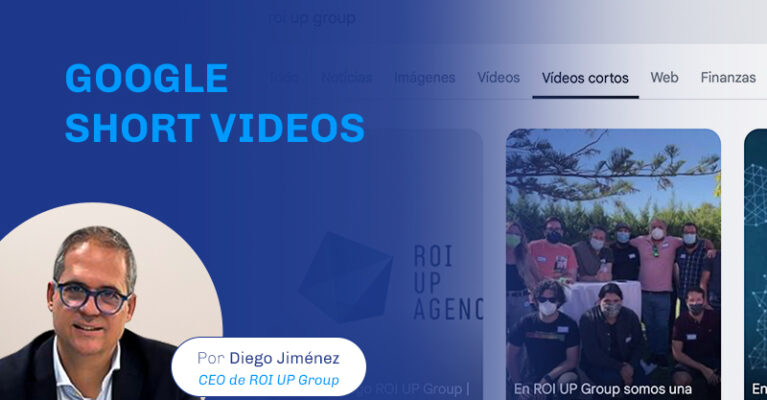
Isaac Prada, SM Consultant at ROI UP Group
We’ve all experienced it. Scrolling through a social network, you come across a video with something unusual, something out of the ordinary, but so well executed that it makes you wonder if it’s real or not. And Artificial Intelligence is now capable of creating images and videos so quickly and with such a level of detail that just a few years ago it would have seemed like science fiction.
You can ask for anything you want, the possibilities are endless: Your favorite actor breakdancing? You’ve got it. The president dancing in a nightclub? Done in a moment. This striking ease of making the impossible believable is precisely what has prompted many governments to regulate AI-generated content, which is becoming more common every day and among which many fake news or deepfakes can sneak in.
At this point, no one doubts that AI-generated content is a reality that is revolutionizing content creation. No creative department dispenses with the tools that Artificial Intelligence provides, which greatly facilitate day-to-day work.
Social networks themselves are also taking action, each in their own way. The goal? To improve transparency and fight misinformation. Let’s take a look at how the main ones are currently doing it.
Meta: essential to avoid problems
According to META “Content created or modified with AI tools must be identified and labeled to promote transparency in Meta’s products.” There is no doubt; on Facebook, Instagram, and Threads, the goal is for generative content to always be identified as such.
META encourages the labeling of generative content. In their case, it is made easy for the user themselves to label this content when publishing it. For this, there is the “Add AI label” button just before posting.
Labeling AI-generated images or videos is not mandatory, but if META’s systems detect them, they may automatically receive the label. AI itself is also responsible for detecting generative content if the user does not do so.
And could there be penalties if I don’t do it? If AI-generated content can be misleading, especially on sensitive topics, as was already the case even before the advent of AI, META may delete the post and take other actions such as banning posting for a period of time or even deleting the account.
TikTok: Highly necessary for authenticity and transparency
The giant Chinese social network seems a bit more lenient when it comes to encouraging the labeling of AI-generated content: “To foster an authentic and transparent experience for our community, we encourage creators to label content that has been fully generated or significantly edited with the help of AI.”
TikTok also has its own button (in “more options” on the publishing screen) so that the user or business account can indicate that the content was generated with AI. Once labeled, it cannot be changed. It also indicates that AI content can be disclosed through text on the content itself, with hashtags, or in the description text.
If users or brands do not indicate that their content is AI-generated, TikTok will automatically apply the label when it detects it.

Source: user @fit_aitana / TikTok / AI Generation

Source: user @babyflix.9 / TikTok / AI Generation

Source: user @babyflix.9 / TikTok / AI Generation
LinkedIn: massive saturation of synthetic content
The professional social network par excellence, owned by Microsoft, is also in favor of labeling AI-generated content. In the specific case of LinkedIn, one of its greatest risks, beyond misinformation or lack of transparency, is the loss of authenticity and credibility with the massive proliferation of “expert tutorial” type content generated with AI, often duplicated from original content. Some studies estimate that AI-generated content accounts for around 54% of the total, an excessively high volume that occurred after the mass adoption of ChatGPT.
To address the issue, LinkedIn relies on automatic detection through the C2PA (Coalition for Content Provenance and Authenticity) verification platform, which adds a watermark with the initials CR to AI content it detects.
For the moment, users do not have an official way to label content beyond indicating it in the description of the content they publish.

Source: @Ansh Mehra / LinkedIn / AI Generation
YouTube: strict with labeling
“…we ask creators to notify the audience when content that appears realistic has been significantly altered or synthetically generated.” In this way, YouTube directly asks creators to label their partially or fully AI-generated content when uploading their videos. The label is then automatically added in the description field.
If not indicated, when YouTube detects this type of content, it directly adds the label without the user having the option to remove it. And they are strict with synthetic content labeling; they apply penalties ranging from content removal to suspension from participating in their Partner program.
In addition, like META, they are particularly strict with sponsored content, which may receive harsher penalties for repeat offenses.
X: The most lenient of all
The former Twitter, owned by the controversial Elon Musk, is the most permissive when it comes to AI-generated content. It does not have any synthetic content labeling button available to users, nor does it automatically detect such content to label it.
Content creators themselves must take responsibility for their content. The hashtag “AIGenerated” is one of the most commonly used to indicate that the posted video or image is synthetic in origin.
Although this label is not mandatory, if the content is misleading or confusing, it will likely be flagged by the community, and depending on the community guidelines it violates, its visibility may be reduced or it may be removed altogether.
Ultimately, labeling synthetic content is not just a technical measure, but a key step in protecting user trust on each platform. Transparency becomes the currency of exchange in the AI era: those who adopt it will not only avoid penalties but will also strengthen their credibility and stand out in an increasingly saturated environment of generative content.
List of AI publications
- The Agentic Web: How AI Makes Our Lives Easier
- PR GEO Friendly: From Visibility to Prestige
- Synthetic content labeling on social media: everything you need to know
- Sentiment and AI Search Engines: The New Reputational Thermometer
- From Social Media Listening to AI Listening:
- Google Short Videos New Horizons and AI Strategies
- We sponsor Best!n Food 2025: AI, reputation and brands that make a mark
- Google Refine Products
- Google AI Overviews’ expansion in Europe and what it means for your brand
- Artificial Intelligence Publications




